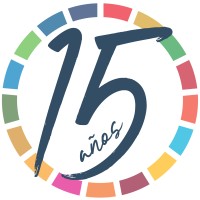
Ardhi University (ARU)
Get verified emails for Ardhi University (ARU) employees

About Ardhi University (ARU)

|
|

|
51-200 employees
View all

|

|
Research
|

|
The Ardhi University (ARU) was established after transforming the former University College of Lands and Architectural Studies (UCLAS) which was then a constituent college of the University of Dar es Salaam from 1st July 1996. The history of Ardhi University, however, dates back to 1956 when the then Surveying Training School offering land surveying technician certificate courses was established at the present location of Mgulani Salvation Army Camp in Dar es Salaam. Then, that school was moved to the present location at which it is today (the Observation Hill) in 1958. In 1972, the school became called Ardhi Institute. The Institute offered two-year diploma programmes in the fields of Land Surveying and Land Management and Valuation. In the same year a three-year Diploma program in Urban and Rural Planning was introduced.rdhi University came into being after the signing of Ardhi University Charter by His Excellency the President of United Republic of Tanzania, Hon. Jakaya Mrisho Kikwete on 28th March, 2007. The University Charter was prepared basing on the Universities Act No. 7 of 2005. The establishment of ARU went concurrently with the establishment of various schools.
|
Ardhi University (ARU) Email Format
The widely used Ardhi University (ARU) email format is {first}@aru.ac.tz (e.g. [email protected]), which is used 100% of the time.
| Ardhi University (ARU) Email Formats | Example Email Formats | Percentage |
|---|---|---|
| {first} | [email protected] |
100%
|
Frequently Asked Questions about Ardhi University (ARU)
What is Ardhi University (ARU) email format?
The widely used Ardhi University (ARU) email format is {first} (e.g. [email protected]) with 100% adoption across the company.
What is Ardhi University (ARU) customer service number?
To contact Ardhi University (ARU) customer service number in your country click here to find.
Ardhi University (ARU) Staff Directory
Search Ardhi University (ARU) Staff Directory
Find accurate personal emails, work emails and phone numbers for employees
Supercharge your
Prospecting &
Outreach with
ContactOut
Supercharge your Prospecting &
Outreach with ContactOut
Search Portal
Find countless prospects outside of LinkedIn fast
Accelerate prospecting with instant access to 300M professionals from 30M companies with the right contact details.















